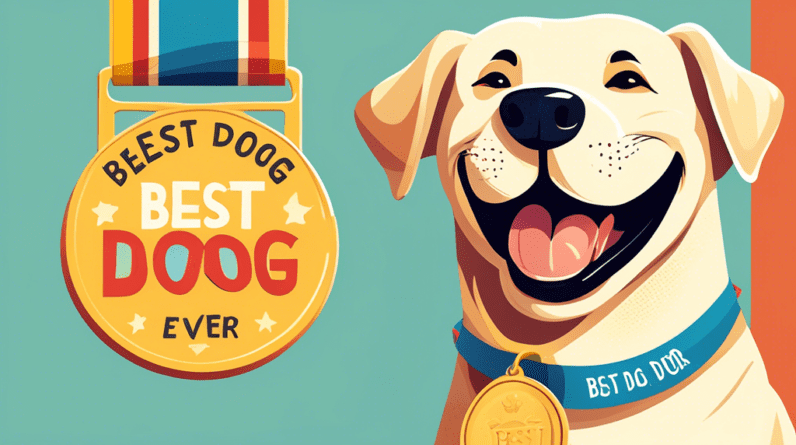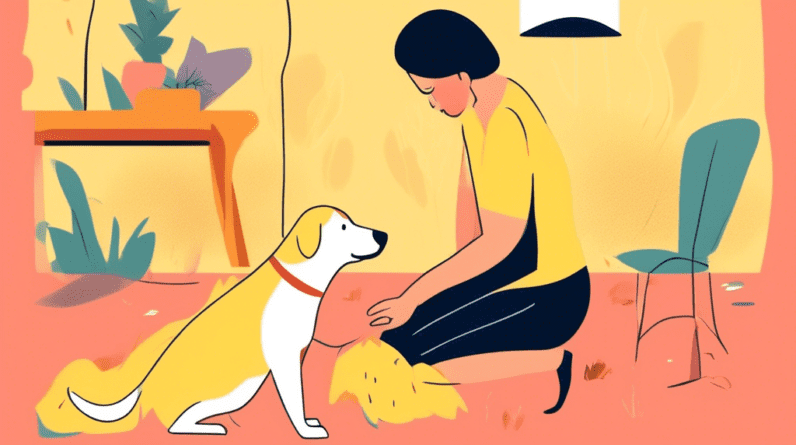
Why Does My Labrador Growl at Me? Understanding Aggression in Labs
Understanding Growling: It’s Communication, Not Always Aggression
Let’s face it: hearing your beloved Labrador growl, especially directed at you, can be unsettling. But before you jump to conclusions about your furry friend turning into Cujo, it’s crucial to understand that growling is a form of communication for dogs, not necessarily a declaration of war.
Dogs growl for a multitude of reasons, and more often than not, it’s their way of saying, Hey, I’m uncomfortable with this! Think of it as their way of setting boundaries. It’s their canine equivalent of us saying, Please back off or This is making me nervous.
Deciphering the Growl: What is Your Lab Trying to Say?
Just like we use different tones of voice to convey different emotions, dogs modulate their growls to send specific messages. A low, rumbling growl might indicate a warning, while a higher-pitched, more intense growl could signal escalating fear or anxiety.
Here’s the key: pay attention to your dog’s entire body language when they growl. Are their ears pinned back? Is their tail tucked between their legs? These are signs of fear or anxiety. On the other hand, a growl accompanied by a stiff body, raised hackles, and a fixed stare could indicate true aggression.
Common Reasons Why Your Labrador Might Growl at You
While Labradors are renowned for their friendly and patient nature, there are several reasons why your typically affable Lab might growl at you:
1. Resource Guarding: Mine! Back Off!
Labradors, like many breeds, can be prone to resource guarding, especially when it comes to high-value items like food, treats, toys, or even a favorite spot on the couch. If you approach your Lab while they’re enjoying a tasty bone or attempt to move them from their coveted resting place, a growl might be their way of saying, This is mine, and I’m not sharing!
2. Fear and Anxiety: I’m Scared!
A growl rooted in fear or anxiety is often a defensive mechanism. If your Labrador feels threatened, cornered, or startled, they might resort to growling as a way to protect themselves. This is particularly common in Labs who have experienced trauma or lack proper socialization.
3. Pain or Discomfort: This Hurts!
Sometimes, a growl isn’t about aggression at all but rather a sign of underlying pain or discomfort. If your Labrador suddenly starts growling when you touch them in a specific spot or if their behavior changes drastically, it’s essential to rule out any medical conditions. A trip to the veterinarian is in order.
4. Playful Growling: Let’s Wrestle!
Yes, you read that right! Sometimes, a growl can actually be a sign of playful interaction. During a rousing game of tug-of-war or a mock wrestling match, your Labrador might growl as part of the fun. This type of growl is usually accompanied by loose body language, playful bows, and wagging tail.
5. Redirected Aggression: Don’t Mess with Me Now!
Redirected aggression occurs when a dog, in a state of heightened arousal or frustration, redirects their aggression onto whoever happens to be nearby—even if that someone is you. For example, if your Labrador becomes agitated by another dog barking outside and you try to calm them down, they might redirect their frustration and growl at you.
Addressing the Growl: How to Respond, Not React
The worst thing you can do when your Labrador growls is to punish them. Remember, they’re communicating a need, and punishing them will only erode their trust in you and potentially worsen the behavior.
Here’s what you should do instead:
1. Stay Calm:
Dogs are masters at reading our body language and energy. If you react to their growl with anger or fear, you’ll only escalate the situation. Take deep breaths, stay calm, and avoid making direct eye contact, which can be perceived as threatening.
2. Assess the Situation:
Try to figure out the trigger for the growl. Is your dog guarding something? Are they in pain? Once you’ve identified the root cause, you can address it appropriately.
3. Give Them Space:
If your Labrador is growling, the best course of action is to give them space. Back away slowly and calmly, avoiding any sudden movements. This allows them to decompress and regain their composure.
4. Consult a Professional:
If the growling is frequent, severe, or if you’re unsure how to address it, it’s crucial to seek professional help from a certified dog trainer or a veterinary behaviorist. They can help you understand the underlying cause of the behavior and develop a safe and effective training plan.
Preventing Future Growls: Proactive Steps for a Harmonious Relationship
1. Positive Reinforcement:
Reward your Labrador generously with praise, treats, or toys when they exhibit desired behaviors. This reinforces good behavior and strengthens the bond between you.
2. Socialization is Key:
Expose your Labrador to a variety of sights, sounds, people, and especially other dogs from an early age. Proper socialization helps them develop confidence and appropriate social skills, reducing the likelihood of fear-based aggression.
3. Obedience Training:
Enrolling your Labrador in obedience classes teaches them essential commands like leave it, drop it, and off, which are invaluable for diffusing potentially tense situations.
4. Environmental Management:
If your Labrador is prone to resource guarding, avoid leaving high-value items lying around. Feed them in a separate area from other pets, and provide them with their own designated resting spaces.
5. Desensitization and Counter-Conditioning:
If your Labrador growls in specific situations, work with a professional to gradually desensitize them to the triggers. This involves slowly exposing them to the stimulus at a low intensity while rewarding them for calm behavior.
Remember: Patience, Understanding, and Professional Guidance
Addressing growling in Labradors requires patience, understanding, and a commitment to working with your furry friend. Never resort to punishment, as it will only exacerbate the problem. By seeking professional guidance, focusing on positive reinforcement, and addressing the underlying causes of the growling, you can strengthen the bond with your Labrador and create a safer, more harmonious environment for both of you.






